Frustratinglyand despite their best intentions, good catch mechanics are very elusive forthe vast majority of swimmers and triathletes. A good catch on the water is oneof the things that separate elite and advanced swimmers from the masses andallow them to move quickly and efficiently through the water – but why do somany swimmers struggle to improve their catch?
尽管经过刻苦的尝试,但是好的抓水对大部分人来说还是很困难。好的抓水是优秀的游泳选手和普通选手的显著区别,但为什么普通人无法提高他们的抓水呢?
Let’s take a look at a common problem that might be holding you back. Here is atypical sequence from one such swimmer Anna showing her entering the water andextending forward:
让我们看看一个普遍的毛病,以下是Anna的入水图片:
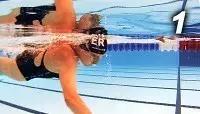
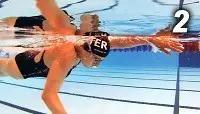
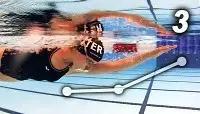
In the final position (3) her elbow hasdropped down lower than the wrist with the hand facing forward. This is aproblem because from there it is impossible to initiate a high-elbow catch onthe water. Instead Anna starts to pull through with the elbow dropped losingher a lot of propulsion:
在第三张图片里,她得肘部比手腕低,手掌朝前方。这让她无法形成高肘抓水,而是用拖肘,这让她失去了推动力。
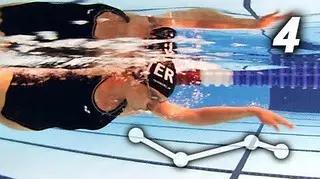
Theinteresting thing here is that Anna knows she should not be dropping her elbowin position 3 and yet is unable to stop it happening. Why? Because she istrying to keep her hand too near the surface at this point in the stroke anddespite her best intentions, as she rotates her body onto her left side she hasto drop her elbow to keep it near the surface. In comparison, take a look atAustralian elite swimmer Rhys Mainstone:
有意思的是,她知道不应该沉肘,但是还是无法控制。为什么?因为她试图让自己的手靠近水面,当她向左侧转动时,就不得不下沉肘部。与之对比,我们看看优秀选手是如何做的:
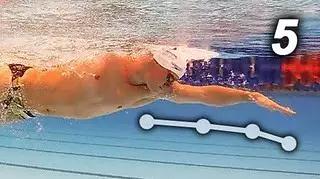
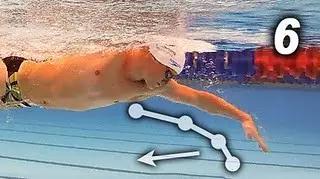
Comparing 3 and 5, notice that Rhys’ handis deeper in the water, which allows him to keep his elbow higher than thewrist and the wrist higher than the fingertips. He can then bend his elbow andstart pressing water backward effectively (6), generating good propulsion.
比较图片3和图片5,我们会发现Rhy的手插得更深,这让他的肘部比手腕高,手腕比手指高。然后他就可以弯曲肘部开始往后压水(图片6),产生很好的推动力。
As you swim, try entering the water andextending forward slightly deeper so that you are able to keep your elbow high.Experiment with different depths to see what feels best – somewhere between 20and 30 cm (8 and 12 inches) is best, the exact depth will depend on how broadyou are and the level of flexibility in your upper back and shoulders. Ofcourse you don’t want to go too deep as this will send your hand down towardsthe bottom of the pool, it’s a matter of finding the sweet spot between thetwo.
在你游泳的时候,尝试入水深一些,这样你就能够让你的肘部保持在较高的位置。尝试不同的深度,看哪种最舒服,20-30cm也许最好,准确地深度要根据你的宽度和身体的柔韧性。当然也不用太深,那会让你的手部指向池底,要在中间找到甜点的位置。
A quick warning here: As you improve yourcatch you may feel your stroke rhythm lifting and your catch and pull throughfeels ‘too easy’. These are good signs that you are getting things right -don’t be put off! Whenever you are making changes to your stroke be objectiveand monitor how fast you are swimming versus your level of effort, don’t justuse your judgement of what feels immediately right and wrong, doing so can bevery misleading at times.
有一个警告:当你的抓水提高后,你会感觉你的划水节奏加快,划水变得十分轻松。这些都是好的现象。每次你要对划水做出改变的时候,你都要把你前进的速度和你付出的努力来做对比,而不是靠立刻的感觉来判断对错,那往往有欺骗性。